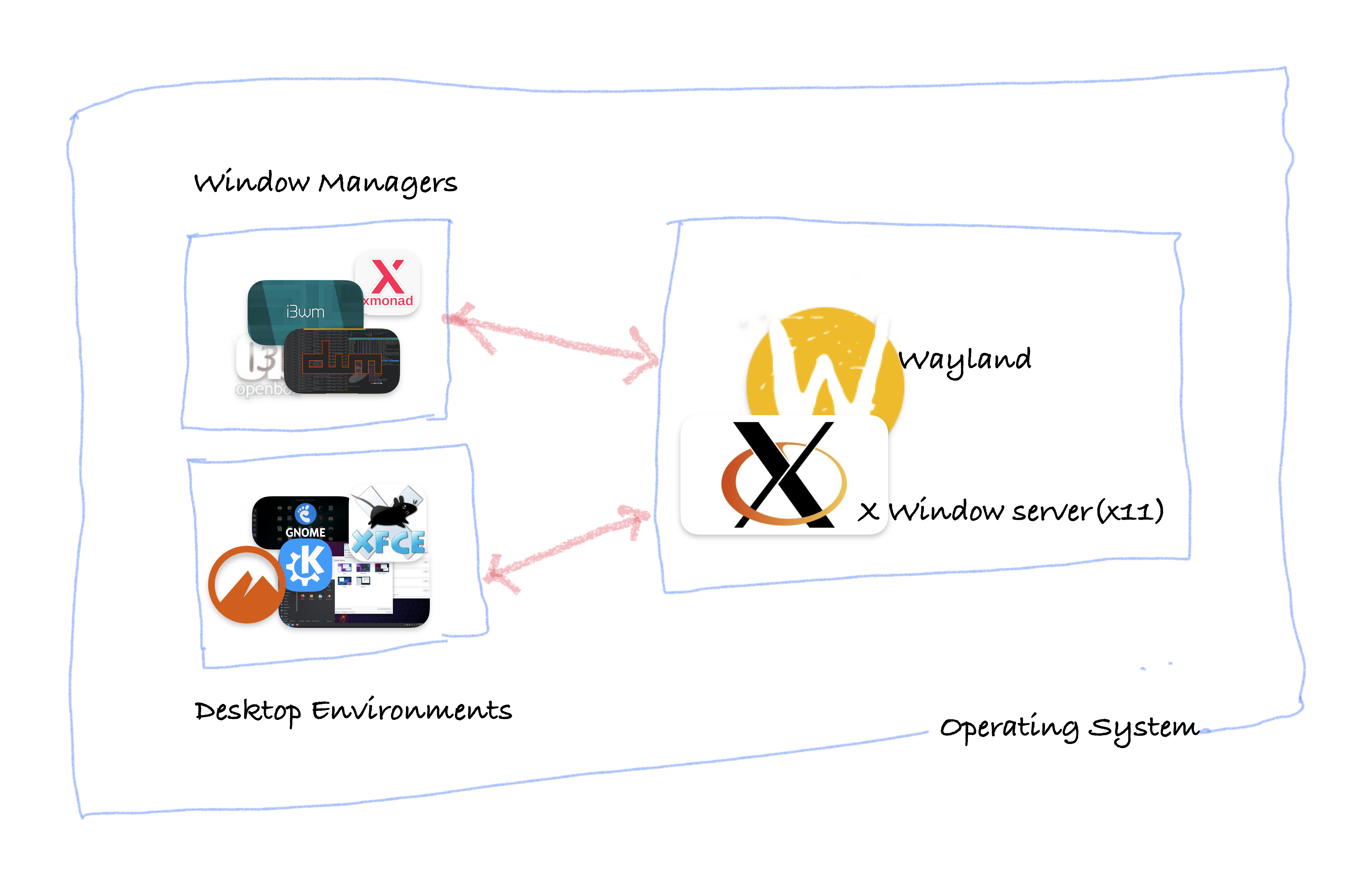Introduction: Window Managers and Desktop Environments
 Raj Kumar Rai Danuwar
Raj Kumar Rai DanuwarTable of contents

Every day, we use various applications on our computers to get things done. These applications can appear on our screen in different ways, such as fullscreen, pop-ups, menus, or tabs. To help us manage how these applications are displayed on our screen, we rely on special tools or applications like i3wm, GNOME, Wayland, and X11.
These tools provide us with a graphical user interface (GUI) that allows us to interact with our computers easily. They help us organize and control how applications are shown, where they are positioned, and how we switch between them.
The Frontends:
Imagine the screen of your computer as a stage where all the exciting things happen. Everything you see on that stage, from colorful icons to windows displaying different applications, is the frontend – the part you interact with directly. But behind the scenes, there are special tools like i3 and GNOME that help manage and organize everything at that stage.
i3 and GNOME are like the directors and stage managers of your computer's screen. They ensure that all the elements are arranged properly and perform smoothly, allowing you to navigate between applications, open windows, and perform various tasks effortlessly.
i3wm is a powerful tool known as a window manager. It acts like a personal assistant, helping you control and arrange the windows on your screen. It ensures that windows are neatly organized, making the best use of your screen space. With i3, you can easily move, resize, and switch between windows using simple keyboard shortcuts, creating a seamless and efficient workflow.
Alternative tools to i3wm:
DWM (personal favriote)
Regolith (easy to install on Ubuntu)
Amethyst (For MacOs User)
komorebi (For Windows Users)
-
and the list goes on ...
On the other hand, GNOME is a complete desktop environment that provides a user-friendly interface. It's like an entire production crew working together to create a visually appealing and intuitive stage for your computer experience. GNOME offers a range of features, including menus, icons, panels, and various applications, all designed to make your interactions with the computer smooth and enjoyable.
Alternative tools to i3wm:
GNOME
KDE Plasma
Xfce
Cinnamon
MacOS(don't know the name)
Windows(have own Desktop environment)
These tools, like i3 and GNOME, handle the backstage work, coordinating how things appear on your screen and how you interact with them. They ensure that your computer screen is a welcoming and organized space, where you can easily access your favorite applications, switch between tasks, and get things done efficiently.
The Backends:
Wayland and X11 are special technologies that help our computer show things on the screen and make sure applications can communicate with the display. They work behind the scenes to make sure everything looks good and works smoothly.
Wayland is a newer technology that is designed to be faster and more secure than the older X11. It helps make our computer run smoothly and quickly by improving how applications show up on the screen. It's like a newer and better way of handling the graphics on our computer.
X11 is the older technology that has been around for a while. It's still widely used and works well, but Wayland is considered more modern and advanced. Think of X11 as the older way of doing things, while Wayland is the newer and improved way.
In summary, these tools and technologies play a crucial role in managing our graphical user interface, allowing us to easily open and organize different types of applications on our computer screen. They enhance our productivity and provide a visually pleasing and user-friendly experience while interacting with our operating system.
Subscribe to my newsletter
Read articles from Raj Kumar Rai Danuwar directly inside your inbox. Subscribe to the newsletter, and don't miss out.
Written by
